A Gift of Life: Visiting the Aramu-Muru Portal
Qoyllur
10/13/20257 min read
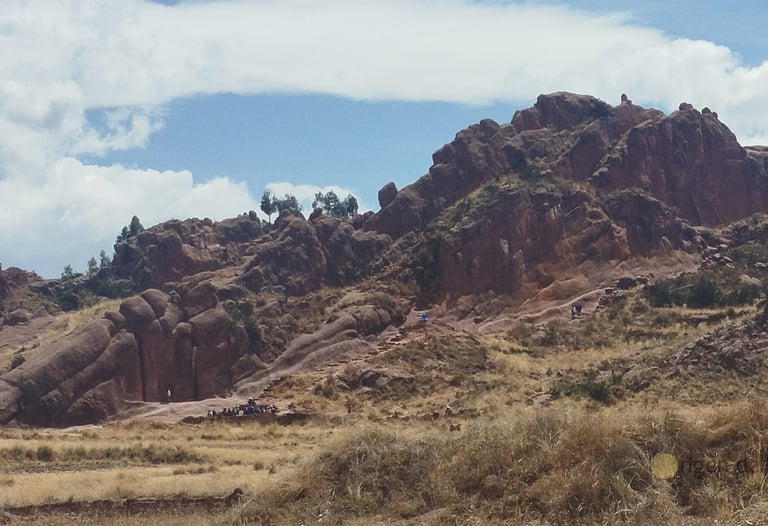

A sacred place among rock formations
I truly wish that everyone interested in metaphysics—that is, everything that goes beyond the physical—could know about this magical and spectacular place in Puno, Peru.
The day I visited it felt like a blessing. Nowadays, finding a tourist site in Peru without too many people is quite rare, but this place still remains somewhat isolated yet sits entirely exposed in plain sight – only those who understand its meaning make the pilgrimage here to give it the importance it truly deserves.
In this first photo, you can see what looks a huge gate or doorway – notice the people there for scale. A lone traveller, stood in white robes, stands at the center of what might be a portal. Seeing this scene really made it hit home just how vast this structure really is, and I was pleasantly surprised to see other people here with the same purpose as me.
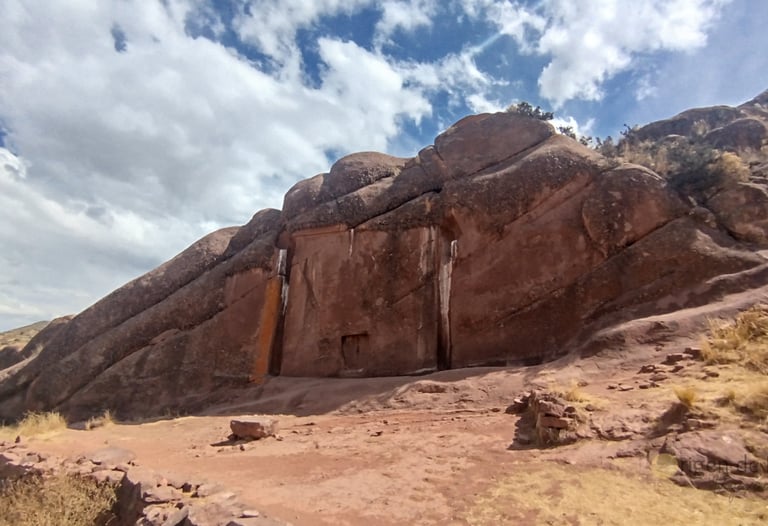

The Aramu-Muru Portal.
In the next photo, you can see the front of the portal. Being there is indescribable, but I’ll try to tell you how I felt. Time stands still — I spent three hours in that place, yet it felt like only fifteen minutes. Your heart feels an emotion that makes it race, and it’s purely because of the energy of the site. You look around and feel as if you’re in another world.
There are many stories about this place, but for now, I’ll tell you about my own experience during this first visit, and I hope that one day you’ll go see this wonderful place for yourself.
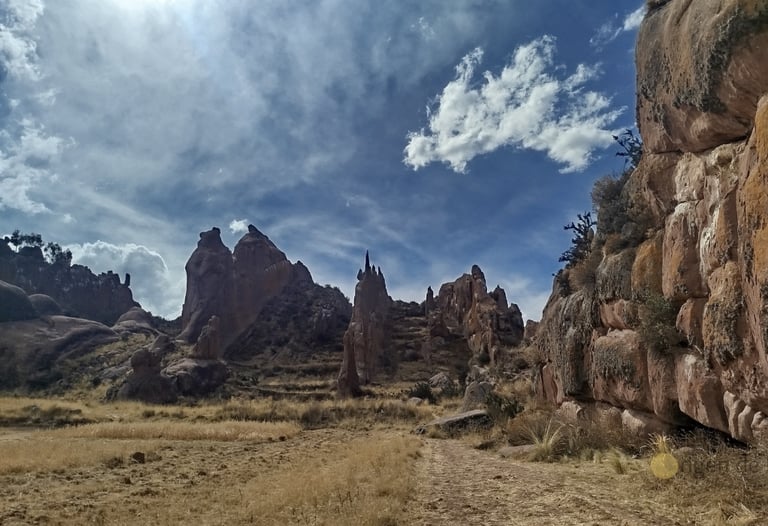

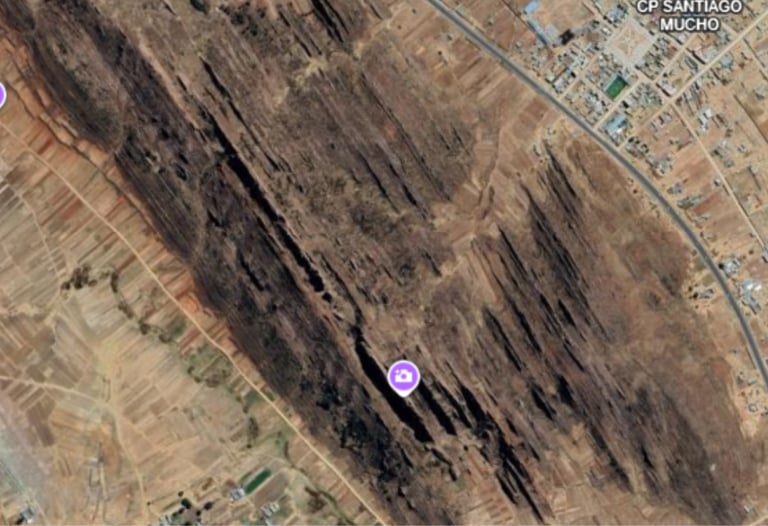

The portal is located on the road between Puno and Desaguadero, very close to Lake Titicaca. The archaeological site is called Hayu Marca, also known as Willka Uta, which means “Sacred Gate.” This site is made up of several rock formations with very peculiar shapes — they look like dragon crests. I believe they could be sleeping dragons turned to stone, and while you’re there, you can feel that there’s life — so much life — even though you’re surrounded only by rocks.
While I was there, I felt they were dragons — several of them. I counted seven crests, and then the local guide told me that throughout the archaeological site, there are seven portals (including the Aramu-Muru portal). How I wish I could have visited each one of them! And believe me, I will on my next trip.
After visiting the site, I looked it up on Google Earth, and honestly, I was left even more confused — because I feel there aren’t many dragons, plural, but just one very large one. From space, it looks like a single great crest, and of course, if I imagine myself riding on top of the dragon, I can easily believe there are many. I hope to solve this mystery one day — that’s why I plan to return.
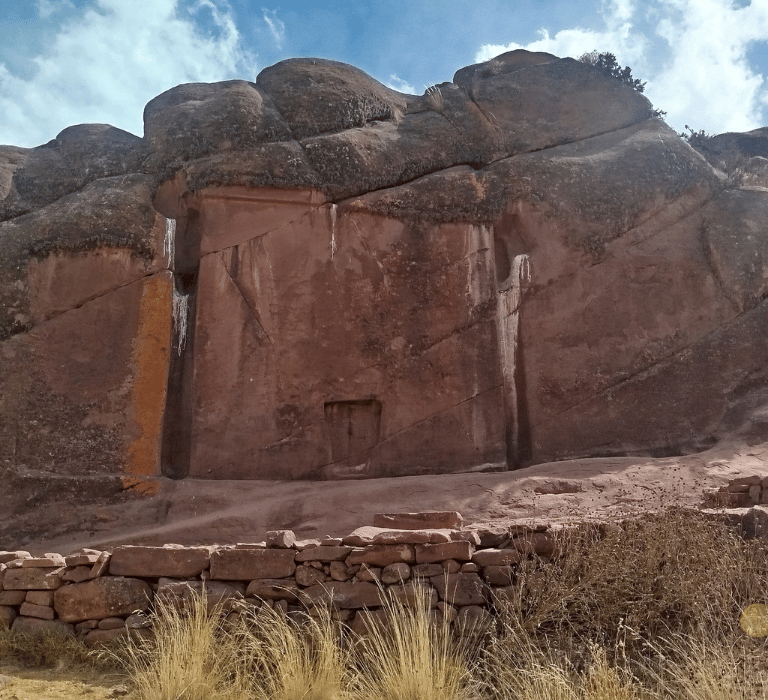

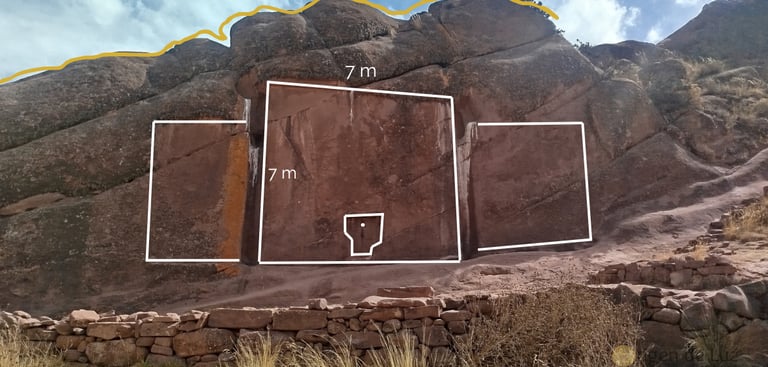

Decoding the Portal
Now I want to talk about the information the portal gives us. As you can see in the photos, that large stone has a door carved almost perfectly into it. The dimensions of this door are 7 meters high by 7 meters wide. What’s incredible is that the hinges and doors are drawn on it. So we can say that what’s represented in the stone is an open door, and the central rectangle of 7 m × 7 m could possibly show what lies on the other side.
What’s curious is that, when tracing how the doors would open, I noticed that their measurements are similar — each side of the door is half the width of the central rectangle — which indicates that it could indeed open and close. Right now, it’s open. In the center of the large rectangle, there’s a small niche, and on the wall inside that niche, there’s a tiny hole, which I’ve marked with a white circle. Later, I’ll tell you how that space is used nowadays.
I also want you to notice, in yellow lines above the portal, the shape I’ve outlined on the stone. If you look closely, it’s the profile of a woman lying down. I still wonder what it means — could she be the guardian of the portal?
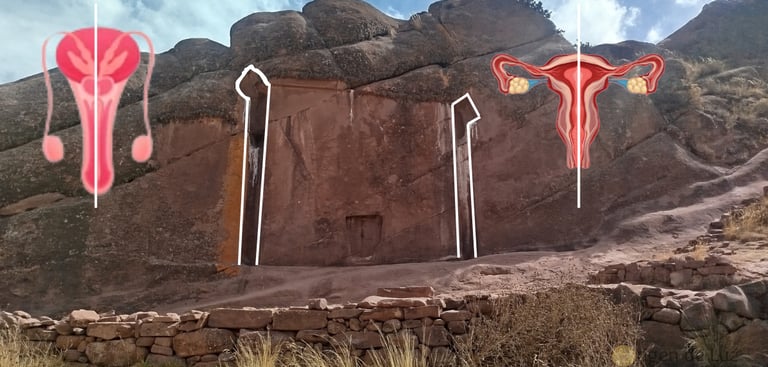

Union of Feminine and Masculine Energy
In the next photo, you can see something that truly surprised me — and that I wouldn’t have noticed if the local guide hadn’t pointed it out. The hinge on the right symbolizes feminine energy, represented by a Fallopian tube, and the hinge on the left symbolizes masculine energy, represented by the shape of the prostate. If you look at the photo without the drawings, you can actually see the difference between the two hinges.
According to what I’ve read and what the guide explained, this site embodies a union of feminine and masculine energies. I believe it may speak more of a balance between these two forces.
When making the drawings of the reproductive systems, I noticed that both the Fallopian tubes and the prostate have almost the same function — they are essential for transporting semen or the ovum, and without them, a man or a woman cannot reproduce naturally. They can generate semen and eggs, but they would need help transporting them.
With this, I came to understand that this portal clearly represents the unification of both energies.
The Step-by-Step Process to Connect with the Portal.
Now, according to the local guide, the process to connect with the portal is as follows: you stand inside the feminine hinge (the one on the right), facing the stone, and ask for permission to enter. Who exactly you’re asking permission from, I don’t know — but in my case, I asked permission from the energy of the stone itself. Then, you walk toward the niche inside the large rectangle. Here, you must kneel facing the stone and place your forehead on the small hole inside the niche — the one I’ve marked in the photo with a white dot. When they tell you to place your forehead there, it’s so that your third eye connects to that opening.
My experience was like something out of a movie. Together with the guide, I was the only person at the site. I was able to stay there as long as I wanted, fully connected, and as soon as I rested my forehead against the stone, the guide began playing his flute. That mystical touch he added to the experience was wonderful, and I’m truly grateful for it.
When I placed my forehead there, I have to say — the best thing is to relax and have no expectations. I went through this process twice. The first time, I wanted to see everything — galaxies, other worlds — I had created a whole movie in my mind. But things are much simpler. The second time I did it, I had no expectations; I just wanted to spend more time there. Then, I began to feel my energetic body and how it wanted to move into the small hole where my forehead was resting — as if the stone were pulling it in. At the same time, the stone began to feel soft; it was no longer hard and solid but seemed to move gently.
I stayed like that for quite a while until I started to feel dizzy because everything seemed to be moving, so I lifted my forehead. Immediately, everything became still again, and I began to see the stone once more as a very solid rock.
After leaving the niche, you must step into the second hinge — the masculine one — and this time stand with your back to the rock, facing the horizon. You give thanks for the experience, and in this way, the entire process or ritual to connect with the portal comes to an end.
Rock Art or Alien Emojis?
Behind the Aramu-Muru Portal, you can find carvings of unknown origin, like the one in this photo. In the picture on the left, you can see it from afar, and in the one on the right, you can appreciate it up close. What does it mean? I don’t know — but what you feel when you’re there is very strange. I took the photo and almost ran away because of how scared I felt.
Finally, I say goodbye with a photo showing the view of the crests — all of this is located behind the Aramu-Muru Portal. There’s still so much more to tell about the mysteries of this site: where the portal’s name comes from, who is believed to have created it, and how it’s connected to other energy centers in the region. I’ll leave that for another time — for now, I just wanted to share my experience visiting this energetic site.
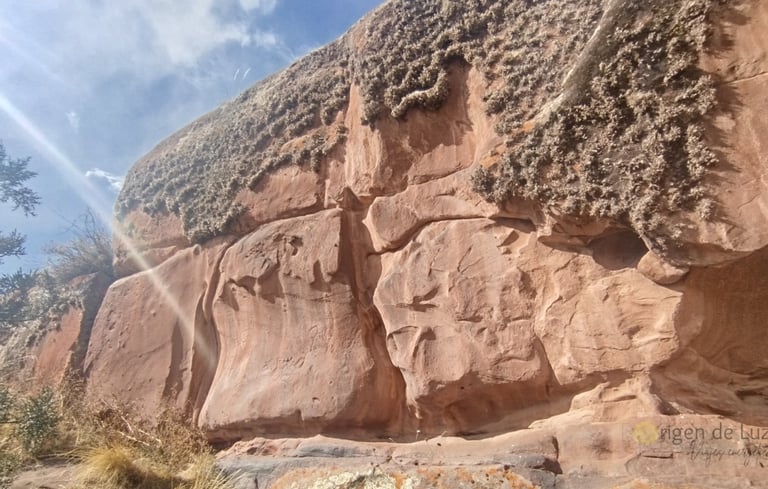

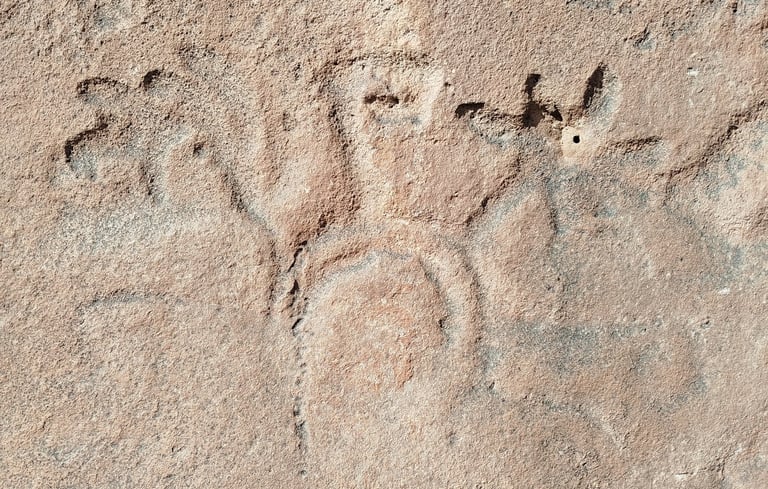


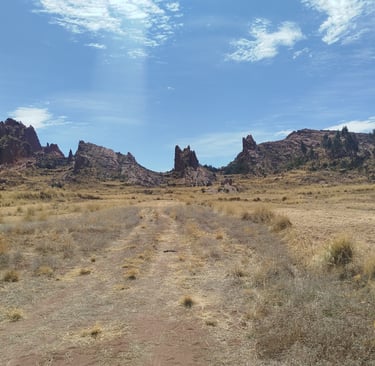
Contact
contacto@origendeluz.com
© 2025. All rights reserved by Origen de Luz.
Follow us
